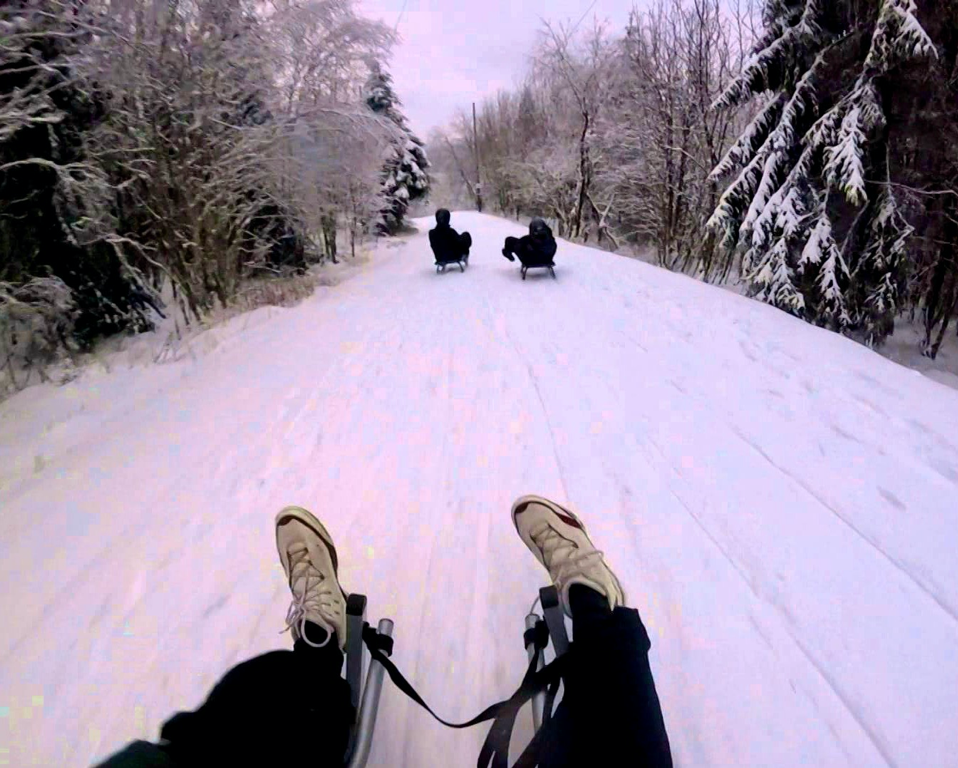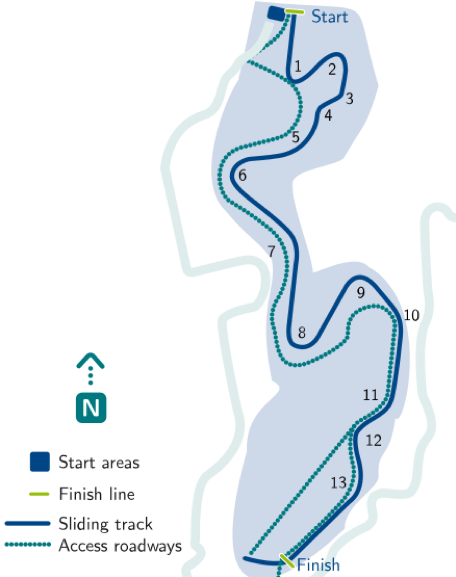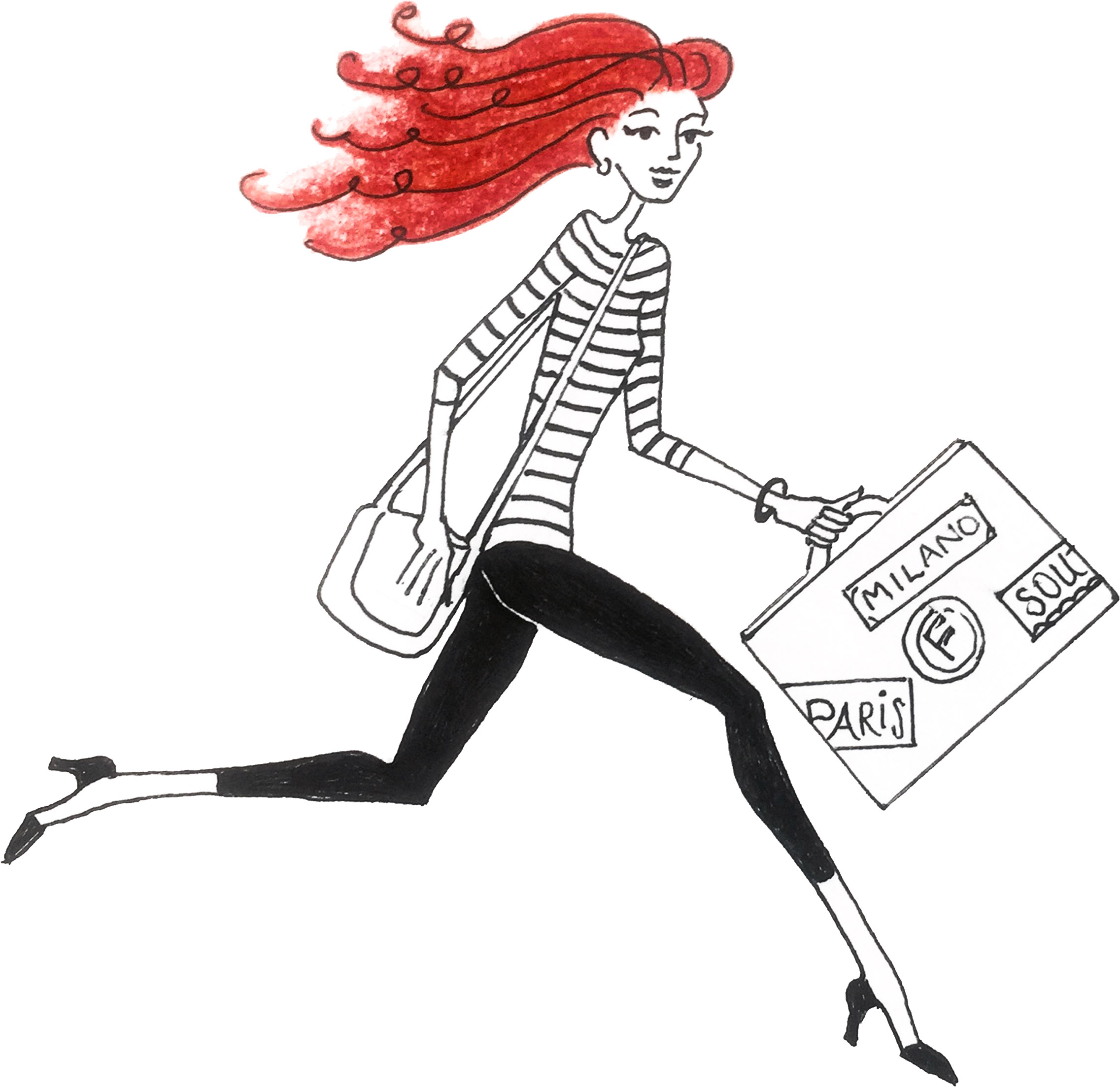Oslo, Norway
Last time we were in Norway, Husband and I went tobogganing. I don’t mean tobogganing, I mean TOBOGGANING: we tackled the Korketrekkeren (Corkscrew, in Norwegian), the ’52 Olympic bobsled/’55 World Luge Championship track turned tobogganing run.

We rented sleds from a sports store (there seems to be a sports store on every block in Oslo—my kind of town) and rode the metro to the top of the hill. There’s no entrance fee, no official start line; you simply put your sled on the snow and go.
The run has thirteen turns, most of them named.

“After people who couldn’t navigate them?” I semi-joked to Husband.
I was slightly nervous. The last time I was on a sled I was eight years old and the slope was a gentle short one in the backyard of our Lake Tahoe summer house. (The “summer” should give you a clue; my family never went there in the winter. I didn’t grow up skiing, sledding, or shoveling.) Now I was about to descend a 5000-foot-long track with an average gradient of 8.6 percent.
“You’ll be fine,” Husband said. A native Canadian, he’d spent many winters speeding down hills on skis, sleds, luges, shovels, and cafeteria trays swiped from school.
“Straddle the sled facing forward,” he told me. “And put your feet up here.”
He indicated two foot rests at the front of the sled, then handed me the rope, the ends of which were tied to the front runners.
“It’s easy,” he said. “Pull right, lean right, and stick your leg out on the right to go right. Vice versa for the left.”
This made me feel more confident; the pulling and leaning seemed similar to driving a pony cart, something I did a lot of growing up (while Husband was stealing cafeteria trays).

“Wait here,” Husband said. “I think I dropped one of my gloves back by the metro stop.”
While I waited, I practiced propping my feet on the foot rests. The sled moved forward a little bit underneath me. I took up the “rein,” as I now thought of it, and pulled on it, first to the right, then to the left. The sled moved a little more. I dropped my feet to the snow and paddled forward a few steps, enjoying the feel of the sled gaining traction.
You know where this is going. Rather, you know where I am going.
Of course the sled started to slide. Of course I propped my feet up on the foot rests. Of course I pulled back on the rope, instinctively acting as though the sled were a galloping horse I could rein to a stop. Of course it didn’t work.
I hurtled down the hill, tears filling my eyes and semi-freezing my eyelashes together. With Husband’s shouts rapidly receding, I tried putting my feet down to stop, but quit trying when it became clear I’d snap an ankle before I slowed the darn thing.
As each turn approached, I’d yank on the rope, lean, and poke my foot out, wondering if this particular bend would be renamed Twist in commemoration. Trees swept by as green blurs. I even passed another sledder, who shouted something in Norwegian I was pretty sure wasn’t, “Hey, you’re doing a great job!”
Somehow I made it to the slight uphill that marked the bottom of the track. As the sled finally lost momentum, I rolled off it and lay on my back in the snow, looking up at the sky. I’ve never seen anything so beautiful.
Almost a minute later, Husband’s face loomed into view. “Wasn’t that great? Next time, wait for me and we’ll go down together.”
“Next time wait for you?” I said as I rolled to my feet and stood on wobbly knees. “HOW ABOUT NEXT TIME YOU TEACH ME HOW TO BRAKE?!”
Which he did. (When descending steep terrain, sit on the rear of the sled and pull up on the front to stop.)
Yes, we went down again. And again.
What a blast.
